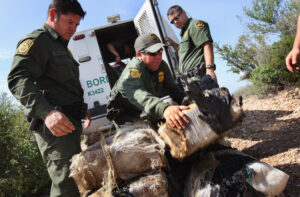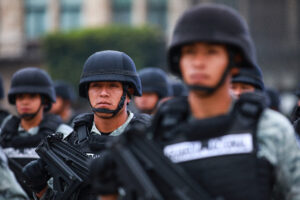By Joe Bateman, Program Officer
In 2006, the Brazilian Congress passed what is known simply as the 2006 Drug Law, which depenalized possession of drugs for personal consumption in what was presented as an attempt to deal with drug use as a public health issue. Despite hopes that the law would lead to a more rational drug enforcement strategy, focusing law enforcement on trafficking and organized crime and leaving the problem of drug use to the public health sector, it has led to a dramatic increase in incarceration for drug-related offenses. Now, state governments are increasing efforts—often with federal funds—to fight drug use and drug trafficking in a way that is once again blurring the lines between a public health focus and a law enforcement focus on the issue.
The most visible example of the “public health” approach to fighting drug use in Brazil is the federal campaign against crack called “Crack: É Possível Vencer,” (Crack, It Can Be Overcome). By 2014, the federal government will have spent around US$2 billion on the campaign, which is managed by the Ministry of Health, in conjunction with the Ministries of Justice, Education, and Social Development. On paper, the campaign focuses the government’s health resources to provide health services to problematic drug users. Yet the campaign also includes funds for drug interdiction along the borders with Bolivia, Peru, Colombia, and Venezuela, as well as funds for local interdiction efforts. The implementation of the program at the state level has run into several problems and received harsh criticism for treating drug use as a security threat, heavily using law enforcement to confront drug use as well as drug trafficking.
Of particular concern, in the states of Rio de Janeiro and Sao Paulo, the state governments have approved forced treatment for users of crack. In both states, police go into areas of the cities with high levels of crack use, known as Crackolandias, and take people off the streets. Since 2011, Rio has carried out 150 such operations to force people to leave these areas, ostensibly to get treatment. This week, Rio carried out another massive operation in two favelas to fight crack use. The operation problematically used the notoriously abusive Batalhão de Operações Policiais Especiais (BOPE), Rio’s Special Operations Police, to address both the issue of drug use and drug trafficking. Twenty-nine drug users were taken to forced treatment after the violent operation, which included gunfire between traffickers and the police. In January, a 10-year-old boy was hit and killed by a car as he ran away from police during one of these operations. Despite rhetoric to the contrary, these recent operations show a clear lack of separation between a health-oriented focus for problematic drug users and a public safety focus for drug traffickers in Rio.
In Sao Paulo, the official name of the campaign to force people out of these Crackolandias is “Pain and Suffering,” which refers to the campaign’s goal of making it extremely difficult, if not impossible, for drug users to enter or stay in these areas. In the first stage of the program, police force out and arrest the traffickers, then they force drug users off the streets in the hopes that they will then see their need for treatment. A recent study about the Crackolandias in Sao Paulo alludes to the fact that public health workers and police officers tasked with working in Crackolandias have little if any knowledge of the other’s operations, and police frequently feel obligated to fulfill social service roles outside of their competency. Furthermore, the medical professionals operating in these areas also cite feeling pressured by politicians to take all children to psychiatric treatment, even when medically unnecessary or inappropriate, in what they interpret as a method to clean up the area instead of a real commitment to helping problematic drug users.
After receiving harsh criticism from human rights groups, the Sao Paulo government has said that only those whose lives are at risk due to their problematic use will be forced into treatment. However, everyone who denies treatment will be compelled to appear before a judge to see if they should be forced into treatment, and the argument could be made that most will “voluntarily” go into treatment to avoid what resembles a criminal trial.
In 2012, various United Nations agencies issued a joint statement condemning the practice of forced treatment for drug users, citing its ineffectiveness and violation of due process, and called all countries that still employ the practice to stop. Additionally, three Special Rapporteurs of the United Nations asked the Brazilian government to explain and address accusations of human rights violations committed during the “Pain and Suffering” police campaigns in Sao Paulo, which cite unnecessary and inappropriate use of force. They also criticize the campaigns for forcing people from already precarious living situations without providing adequate housing, thus increasing levels of homelessness, and for treating the crack epidemic as purely a security issue instead of a public health issue. Despite the arguments against the ways Brazil is addressing crack use, especially forced treatment, a court in Rio de Janeiro recently upheld the constitutionality of the practice.
Experts also cite a lack of clear definition in the 2006 Drug Law about who qualifies as a drug user or trafficker, so the distinction has largely been up to the discretion of local arresting police officers, and judges rarely question their classifications. Since the passage of the law, the number of people incarcerated in Brazil has more than doubled, and the increase is largely due to people imprisoned for drug trafficking. Many of those arrested were carrying relatively small amounts of drugs, were arrested alone, and were first-time offenders. Furthermore, it has been documented that people arrested for possession of drugs are much more likely to be labeled as drug traffickers if they have dark skin and/or are in poor areas of the city than if they are white and/or in better-off areas of the city. Although the 2006 law removes prison penalties for users, the minimum prison time for traffickers, even for minor, nonviolent offenders went up from three to five years. Between June 2011 and November 2012, more than 20,000 people were put in prison as a result of federal law enforcement operations to fight drug trafficking along the border alone, which does not account for state-level arrests.
In Brazil, problematic drug use continues to be treated as a public security, and hence law enforcement, problem, despite claims to the contrary. In fact, as illustrated by the massive and frequent operations in the Crackolandias of large cities, there is a seeming disconnect between the federal drug policy that has depenalized drug use in theory and state-level law enforcement that continues to address drug users as a threat to public safety. While the federal government has dedicated significant resources to expanding acces
s to drug treatment, it has been largely absent from pushing for unified, rights-respecting citizen security policies throughout the country. Moreover, despite the clear evidence of the flaws in the 2006 drug law, the federal government has failed to support its reform. Viva Rio and other Brazilian NGOs are leading a campaign called “É Preciso Mudar,” or “It’s Time to Change,” to reform the law in order to fully decriminalize drug consumption and to clarify the distinction between user and trafficker. However, before long-term reforms are passed, the federal and state governments should begin to better coordinate to ensure that problematic drug use is in fact addressed as a public health issue, and that policies to address drug use and drug trafficking do not further marginalize already marginalized sectors of society.
Photo: Favela, Brazil.



